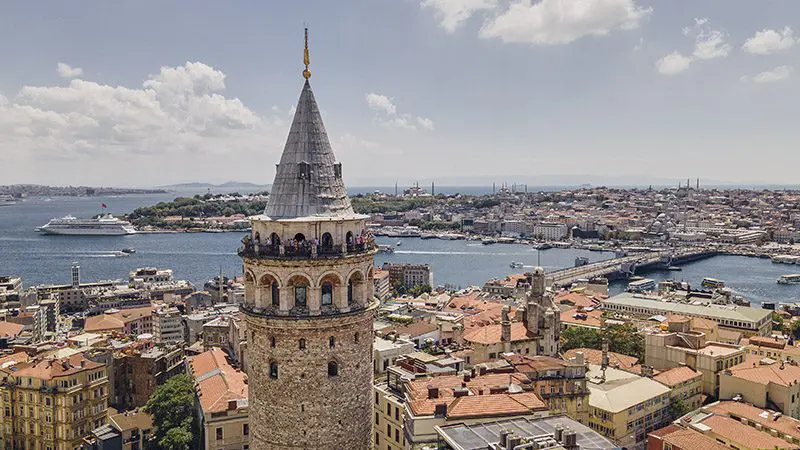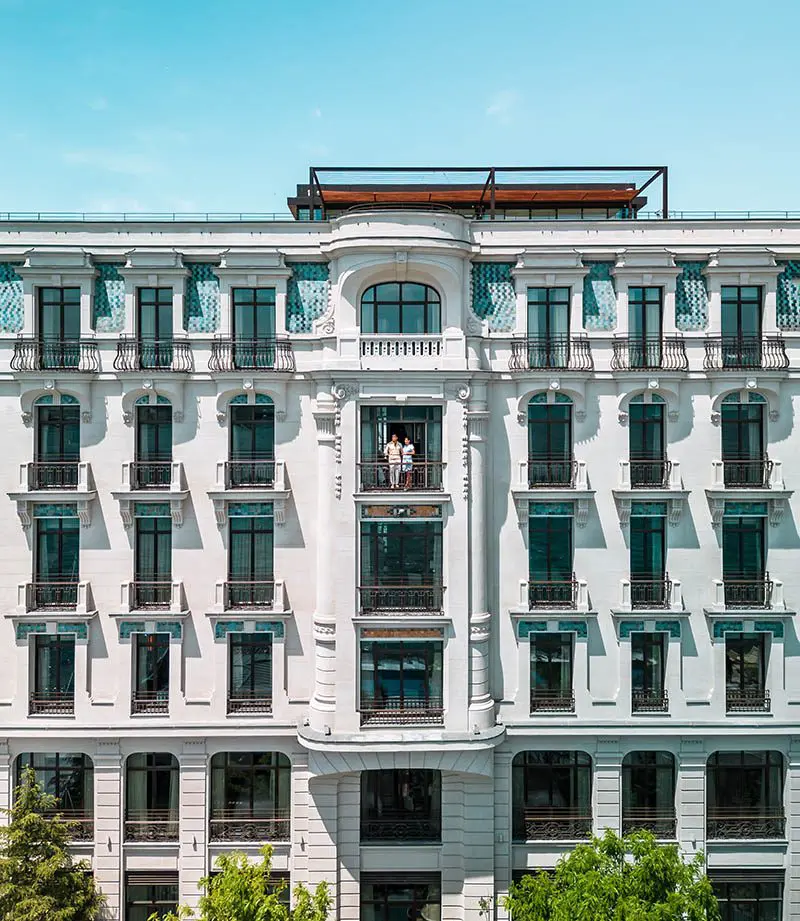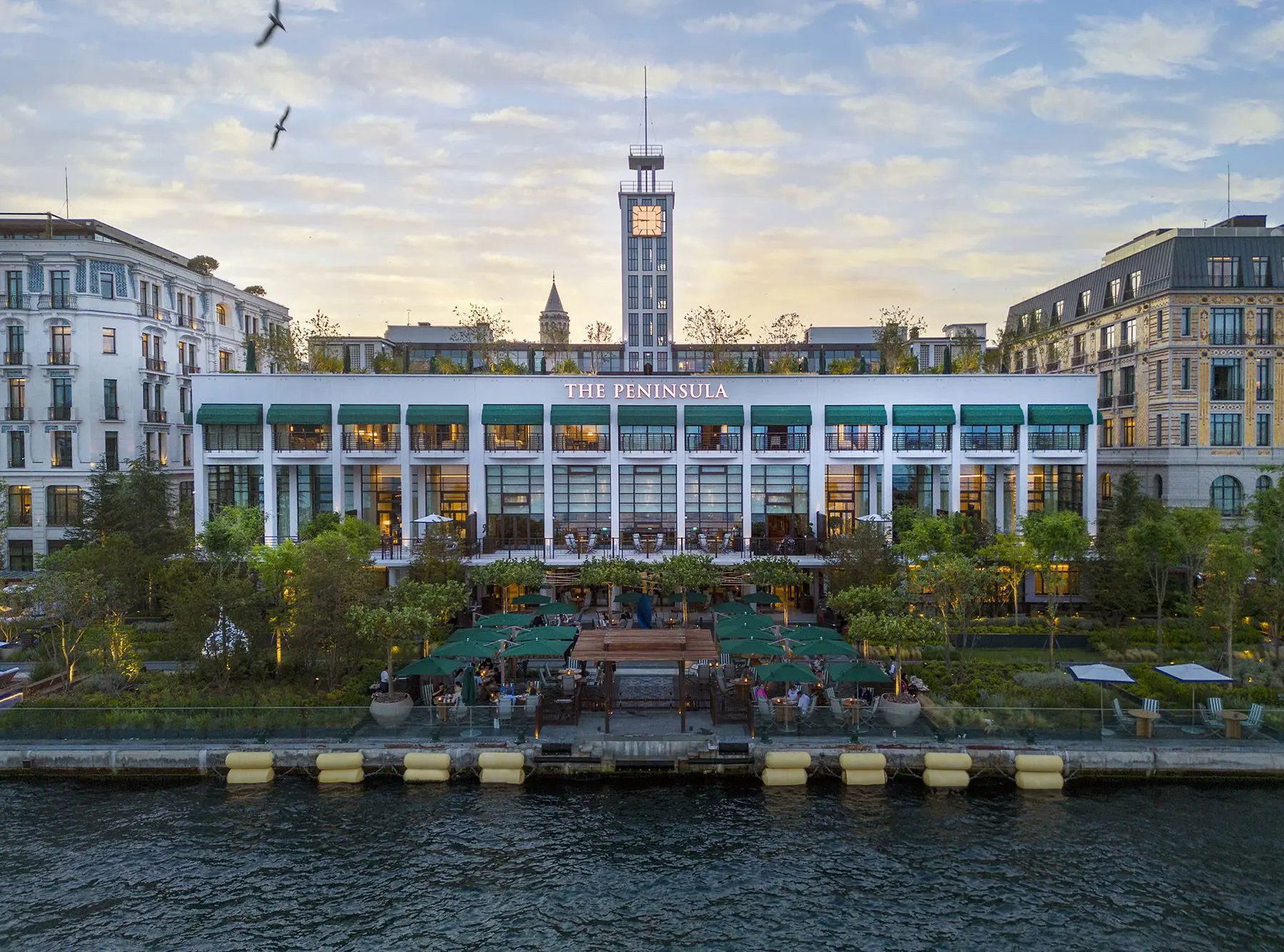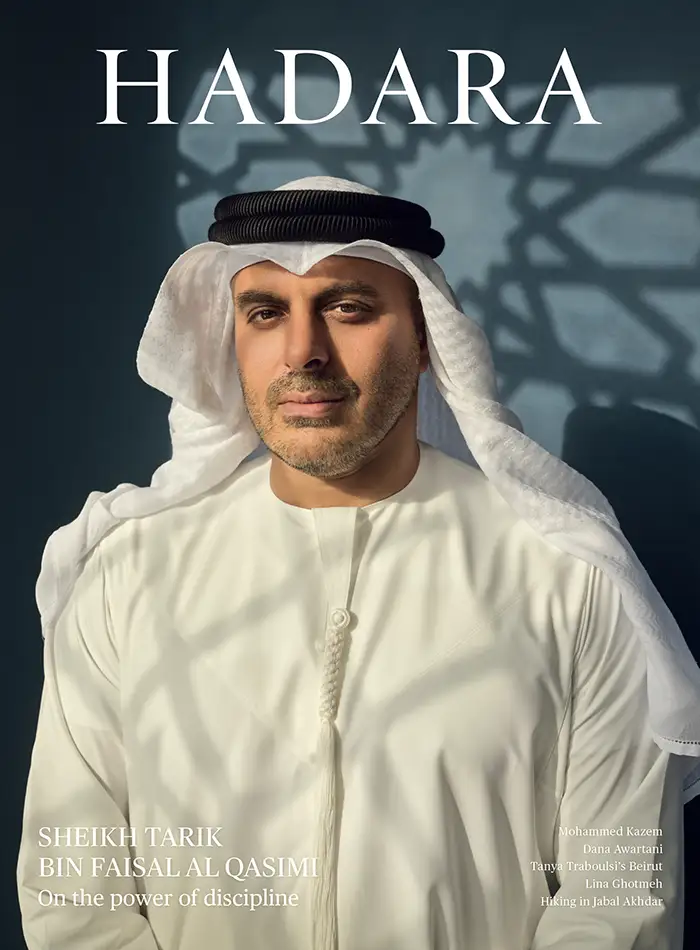Beauty on the Bosphorus
The Peninsula Istanbul breathes new life into a modernist landmark.
By Nicola Chilton
Viewed from the waterside terrace of The Peninsula Hotel, Istanbul awakes. Seagulls cry and chains clink against the quay as ferries chug from Europe to Asia and back again. Across the grey-green water, where the Golden Horn meets the Bosphorus, the skyline is pierced by minarets and domes—the Blue Mosque has watched over this storied waterway for 400 years, Hagia Sophia for 1500. My table, laid with a breakfast of çilbir, simit and sweet cherries, could hardly be closer.
It’s a staggering backdrop for the city’s newest luxury hotel. The Peninsula Istanbul, which opened in February, is part of the Galataport development, a $1.7 billion revitalisation of the Karaköy waterfront that includes the city’s new cruise port, Renzo Piano’s Istanbul Museum of Modern Art, high-end shopping and waterfront restaurants. Despite its contemporary surroundings, the spirit of this hotel lies in a bygone era of travel.
The Peninsula occupies three historic buildings and one new one on the edge of the Bosphorus. Two of the buildings, neoclassical in style with Art Deco touches including the original tiles, date from the early 20th century. The largest of the four is the former Karaköy Passenger Terminal, the city’s first modern port terminal which opened in 1940 and today forms the hotel’s lobby.
“Turkey has few modernist buildings, so we were very careful about keeping the Bauhaus spirit, but also bringing in the spirit of the Peninsula,” says İdil Erdemli, senior architect at Zeynep Fadillioglu Design, the studio responsible for the hotel’s interiors. Converting the space, she says, involved keeping as many of the original structural elements as possible while adding the warmth expected of a luxury hotel, and some unexpected elements—like muqarnas domes and traditional kilim patterns—that the studio is renowned for.

The lobby, a light-filled space stretching from the street entrance to the waterside terrace, is located in the former Karaköy Passenger Terminal, opened in 1940. The eight-metre-high ceiling is made of glass tiles in shades of amber and white, reminiscent of Bauhaus with the spirit of Frank Lloyd Wright.
The lobby is a vast, light-filled space, stretching from the street entrance to the waterside terrace. As a passenger terminal, it would have been a dramatic starting point for a journey by sea, and it still retains a sense of romance. The eight-metre-high ceiling is made of glass tiles in shades of amber and white, “reminiscent of Bauhaus, with the spirit of Frank Lloyd Wright,” Erdemli says. Dramatic chandeliers echo Art Deco lanterns, a nod too to the Peninsula Hotels’ Hong Kong heritage—the hospitality group, Asia’s oldest, was founded there in 1866—and to the Silk Road that connected China and Turkey. Classic Ottoman designs like Iznik tiles and chintamani motifs are thought to have originated in China.
Around the mezzanine, backlit glass wall panels take inspiration from Bauhaus. Patterns from textile designer Anni Albers, wife of Josef Albers, an artist and Bauhaus professor, inspired glass artist Kerim Kılıçarslan’s hand-engraved panelling. Layered with gold, copper and silver, they add a textile-like element to the space. Viewed up close, they look like microchips, but from a distance “it’s something else, something very tactile,” Erdemli says.
Other motifs allude to the building’s original purpose. The metal railings that line the mezzanine resemble the original balustrades that led to balconies where people waved to loved ones setting sail, and at floor level, buffet counters are based on the original passenger ticket kiosks.
But on a sunny day in July, visitors hurry past these details to get out onto the terrace and soak up some of the most extraordinary views in the city. A five-piece band plays jazz beneath the concrete pergola, another original feature of the passenger terminal, as well-dressed guests sip tea on striped chairs reminiscent of a cruise liner. In the gardens, designed by Swiss landscape architect Enzo Enea, more than 250 mature trees have been planted, including pistachio, honey locust and plane trees, as well as fragrant herbs and flowers—thyme, rosemary, lavender. But the highlight of the hotel’s outdoor space is the infinity pool, so close to the Bosphorus that you see passengers on the ferries as they pass.
On the top floor of the main building, beneath the iconic clock tower, is Gallada, a restaurant by chef Fatih Tutak of Michelin-starred Turk Fatih Tutak. The cuisine is a journey along the Silk Road, with flavours of Türkiye, Central Asia and China meeting in exquisitely crafted dishes.


Istanbul provides an unrivalled backdrop. The hotel, on the revitalised Karaköy waterfront, opened inFebruary, but its spirit lies in a bygone era of travel.
While much of the hotel’s allure is based on its views and outdoor areas, another treasure lies underground—the huge subterranean space that houses the spa, hammam, and indoor pool, as well as striking ceramic sculptures by Turkish artist Elif Uras. Vaulted ceilings decorated with subtle kilim patterns connect the treatment rooms, thermal suites and traditional hammam. An hour can happily be spent on the heated circular marble slab being scrubbed and soaped. The 25-metre indoor pool, Erdemli says, combines “the modern and traditional, both austere and high-end.” Flanked by Marmara marble columns and walls, its ceiling is studded with 3D-printed muqarnas-style domes and mirrored lights that reflect onto the water.
Upstairs, off corridors lined with large black-and-white photographs of Istanbul by Turkish photojournalist Ara Güler, the guest rooms presented an unusual challenge. “Not all the rooms have the same plan, so out of 177 rooms we have 146 architectural types,” Erdemli says.
The rooms are calm and nuanced, filled with light and free of clutter. But it’s worth paying attention to the details: to the mother-of-pearl inlay and marquetry on the panel behind the bed, to the pale grey carpet woven with patterns derived from Ottoman kaftans, to the lacquered cabinet painted by hand, another nod to the brand’s Chinese heritage.
This design narrative, a marriage of innovation and tradition, was important to Zeynep Fadillioglu. “In the old days, when a craft was done really well it was called Eser-i İstanbul, a masterpiece of Istanbul,” Erdemli says. “We want this hotel, with its combination of old and new details, to become a new masterpiece of Istanbul.”

The hotel occupies four exquisite buildings, three of them historic, including the restored Merkez Han, built between 1910 and 1914 in the Art Nouveau style. Photo: Jeremy Flores.
ALL IMAGES COURTESY OF THE PENINSULA ISTANBUL



